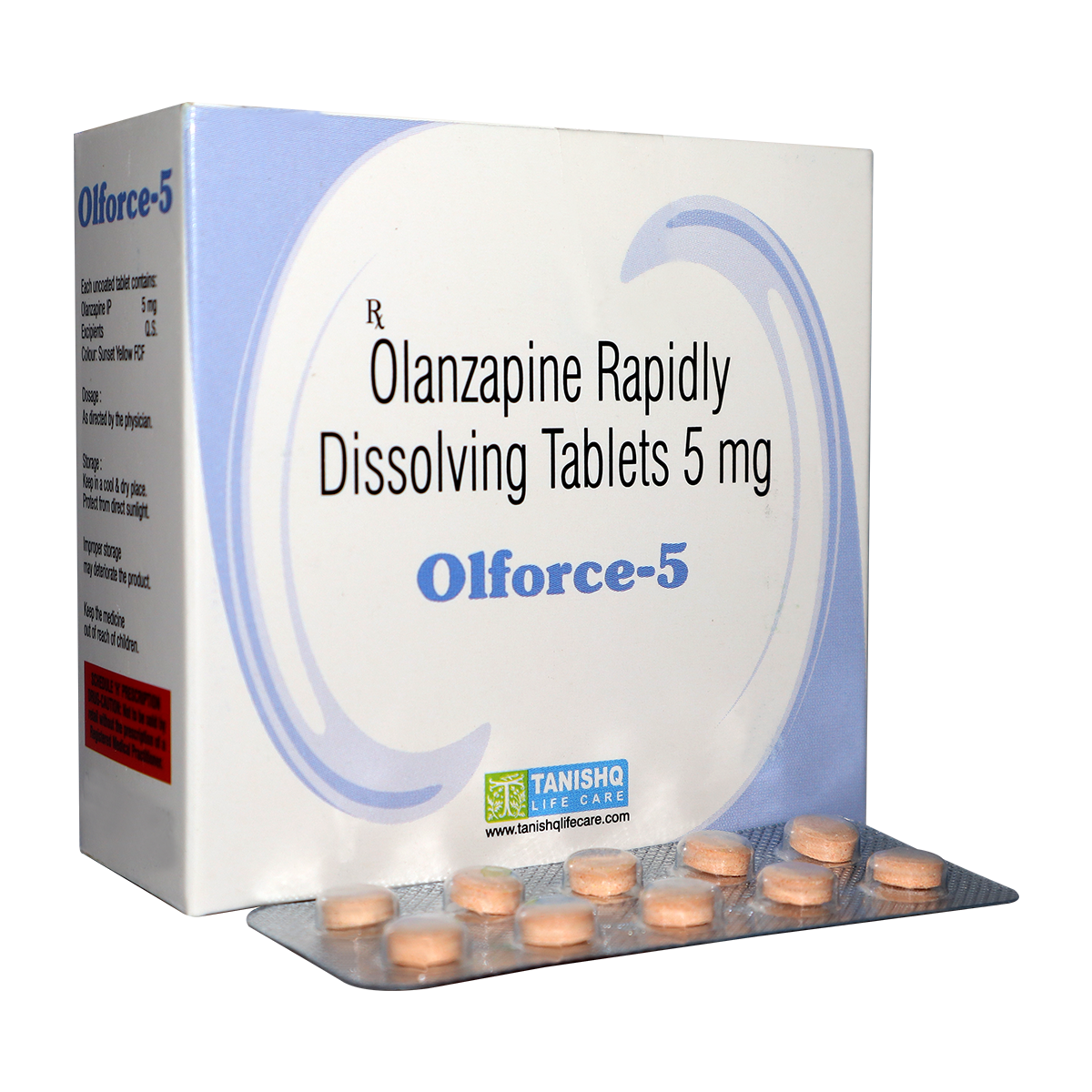
Olanzapine Rapidly Dissolving Tablet 5mg
- Class: Atypical (second-generation) antipsychotic.
- Mechanism of Action: Olanzapine works by balancing dopamine and serotonin levels in the brain, which helps to reduce symptoms of psychosis (like delusions and hallucinations) and improve mood stability.
- Recommended Usage
Indications
Schizophrenia: For the treatment of acute and chronic episodes of schizophrenia, improving both positive and negative symptoms.
Bipolar Disorder: Used for acute manic episodes and for maintenance therapy in bipolar disorder.
Acute Agitation: Sometimes used for the management of agitation in patients with schizophrenia or bipolar disorder.
Off-label Uses: Occasionally prescribed for treatment-resistant depression, anxiety disorders, and sometimes insomnia.
Dosage and Administration
Starting Dose: Typically 5 mg once daily, especially in patients who are new to treatment.
Titration: Depending on the response, the dose can be adjusted to 10–20 mg per day.
Typical Dose Range: 5 mg to 20 mg per day, depending on the condition and individual response.
Administration:
o The rapidly dissolving tablet should be placed directly on the tongue, where it will dissolve within seconds, without the need for water.
o Taken once daily, usually in the evening because of its sedating effects.
o Can be taken with or without food.
Precautions
Pregnancy: Classified as Category C (potential risk to the fetus), so it should be used during pregnancy only if the potential benefit outweighs the risks.
Breastfeeding: Olanzapine is excreted in breast milk, so breastfeeding is generally not recommended during treatment.
Elderly: Elderly patients are at increased risk of side effects like sedation, hypotension, and movement disorders.
Liver/Kidney Disease: Dose adjustments may be needed for patients with liver or kidney impairment.
Metabolic Effects: Olanzapine can cause weight gain, elevated blood sugar (hyperglycemia), and lipid abnormalities, so metabolic monitoring is essential.
Cardiovascular Risk: It can cause orthostatic hypotension (low blood pressure when standing), and caution is advised in patients with heart disease or those at risk for arrhythmias.
Product Category
- Anti Infective
- Injectables
- Pre Filled Syringe
- Immunosuppressants
- Anti Ulcerant/ppis
- Joint Care
- Enzymes
- Heamatinic Agents
- Antioxidant Multivitamins
- Laxatives
- Anti Alergic
- Corticosteroids & Combinations
- Anti Fungal
- Medicated Soaps
- Emollients and Moisturisers
- Face Care
- Puva & Sun Protectors
- Hair Care
- Anti Acne Preparation
- Analgesics Antipyretics & Anti Inflammatory
- Anti Spasmodic & Anti Emetic
- Expectorants Antitussives & Mucolytics
- Antidiarrheals
- Cardiac Drugs
- Antipsychotics
- Anti Epileptics
- Migraine
- Anti Dyspetic
